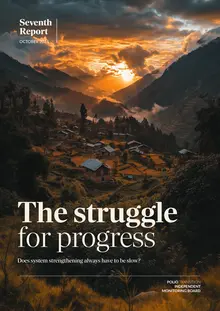
The fundamental challenge in implementing polio transition is that, while the overall purpose is quite clear, the complexity involved in reaching consensus on its precise goals, on how best to implement them, and finding agreed ways to measure progress has led, over recent years, to a constant process of revisiting and resetting this key programme.
The TIMB was established to oversee the polio transition process and provide independent evaluations of progress and recommendations for meeting the challenges and helping to shape the programmes of work.
The TIMB has produced six extensive reports over the last eight years, each time seeking to help to unravel these complexities and particularly to urge the polio partners to reach firm decisions on governance, on the timing of transfer of functions currently managed by the GPEI to new management arrangements, and on the extent to which polio transition should have an explicit role in strengthening health systems at country level to enable them to deliver a polio-free world.
Polio transition should not be seen as an “exit strategy,” where partners simply withdraw upon completion. Rather, it should be viewed as a maintenance and sustainability strategy designed to uphold the Polio Programme’s achievements and maintain its assets so that eradication gains are protected and integrated within broader health systems.
Such a perspective creates a clear distinction between handing-off responsibilities and creating a continuum where immunisation, surveillance, emergency response and primary healthcare systems progressively take on these roles without abrupt funding or support cessation. It helps to provide a healthy challenge to the premise that transition marks a definitive end to GPEI’s involvement and funding.
Early on in the concept of polio transition, it became clear that achieving the minimum requirement of ensuring sufficiently strong polio-essential functions within a country-led and funded post-GPEI world was far more complex than ever anticipated.
Part of the reason for this was the emergence of major global events of a very profound nature: the after-effects of the 2008 financial crisis, the COVID-19 pandemic and the repeated failures to meet any of the deadlines for interrupting wild poliovirus transmission in the 21st century so far.
The original World Health Assembly resolution, and the work of a heavily funded and tightly coordinated polio eradication programme, had been based on the assumption that the world would enter a new millennium free of the scourge of polio. It did not.